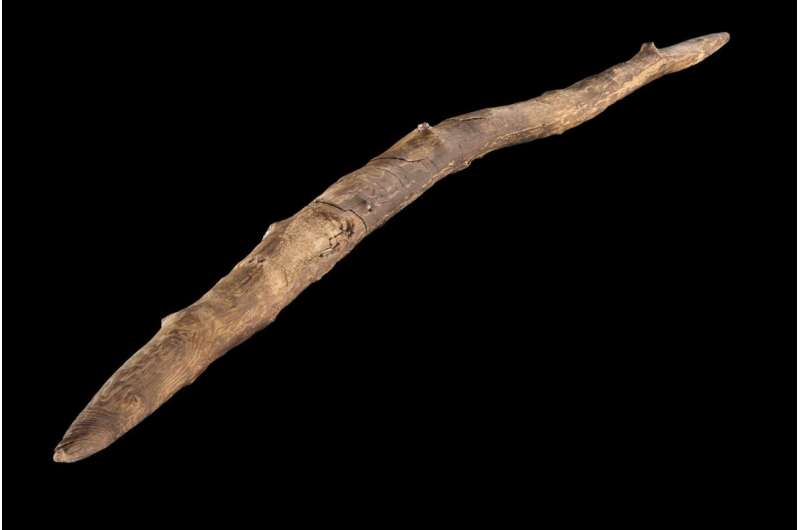 JUL
JULOf course they were. they had the tools to hand with a sharp edge and wood is easily worked to obvious failure limits. what should be obvious is that the so called stone age was in fact the wood age.
wood is perfect for producing temporary tools and all sorts of crafts as we see to this day. And undetrstand that we only shifted away from wood only in the past century with plastics
What this also tells us is that sharp edges were not just used for weapons or sraping skins. they were used mostly for shaping wood of various types.
Recently i saw an item showing how shields were made from a piece of green willow bark which was flattened while wet.. A shaped or split lath from a stiff wood was then pushed into the layer of sap wood, down along the grain to act as strenthening and general reinforcement. This was neat and actually made a shield.. A hammer would bounce off it and any edge would likely be caught tearing this apart. Way better than wicker?
Early humans were weapon woodwork experts, study finds
Artistic reconstruction showing the stick would have been thrown. Credit: Benoit Clarys
A 300,000-year-old hunting weapon has shone a new light on early humans as woodworking masters, according to a new study.
Y 19, 2023
State-of-the-art analysis of a double-pointed wooden throwing stick, found in Schöningen in Germany three decades ago, shows it was scraped, seasoned and sanded before being used to kill animals. The research indicates early humans' woodworking techniques were more developed and sophisticated than previously understood.
The findings, published today in PLOS ONE, also suggest the creation of lightweight weapons may have enabled group hunts of medium and small animals. The use of throwing sticks as hunting aids could have involved the entire community, including children.
Dr. Annemieke Milks, of the University of Reading's Department of Archaeology, led the research. She said, "Discoveries of wooden tools have revolutionized our understanding of early human behaviors. Amazingly these early humans demonstrated an ability to plan well in advance, a strong knowledge of the properties of wood, and many sophisticated woodworking skills that we still use today."
"These lightweight throwing sticks may have been easier to launch than heavier spears, indicating the potential for the whole community to take part. Such tools could have been used by children while learning to throw and hunt."
Co-author Dirk Leder said, "The Schöningen humans used a spruce branch to make this aerodynamic and ergonomic tool. The woodworking involved multiple steps including cutting and stripping off the bark, carving it into an aerodynamic shape, scraping away more of the surface, seasoning the wood to avoid cracking and warping, and sanding it for easier handling."

Schonigen double pointed wooden throwing stick. Credit: Volker Minkus
High-impact weapon
Found in 1994, the 77cm-long stick is one of several different tools discovered in Schöningen, which includes throwing spears, thrusting spears and a second similarly sized throwing stick.
The double-pointed throwing stick—analyzed to an exceptionally high level of detail for this new study—was most likely used by early humans to hunt medium-sized game like red and roe deer, and possibly fast-small prey including hare and birds that were otherwise difficult to catch.
The throwing sticks would have been thrown rotationally—similar to a boomerang—rather than overhead like a modern-day javelin and may have enabled early humans to throw as far as 30 meters. Although lightweight, the high velocities at which such weapons can be launched could have resulted in deadly high-energy impacts.
The fine surface, carefully shaped points and polish from handling suggest this was a piece of personal kit with repeated use, rather than a quickly made tool that was carelessly discarded.
Principal investigator Thomas Terberger said, "The systematic analysis of the wooden finds of the Schöningen site financed by German Research Foundation provides valuable new insights and further exciting information on these early wooden weapons can be expected soon."
The well-preserved stick is on display at the Forschungsmuseum in Schöningen.
No comments:
Post a Comment